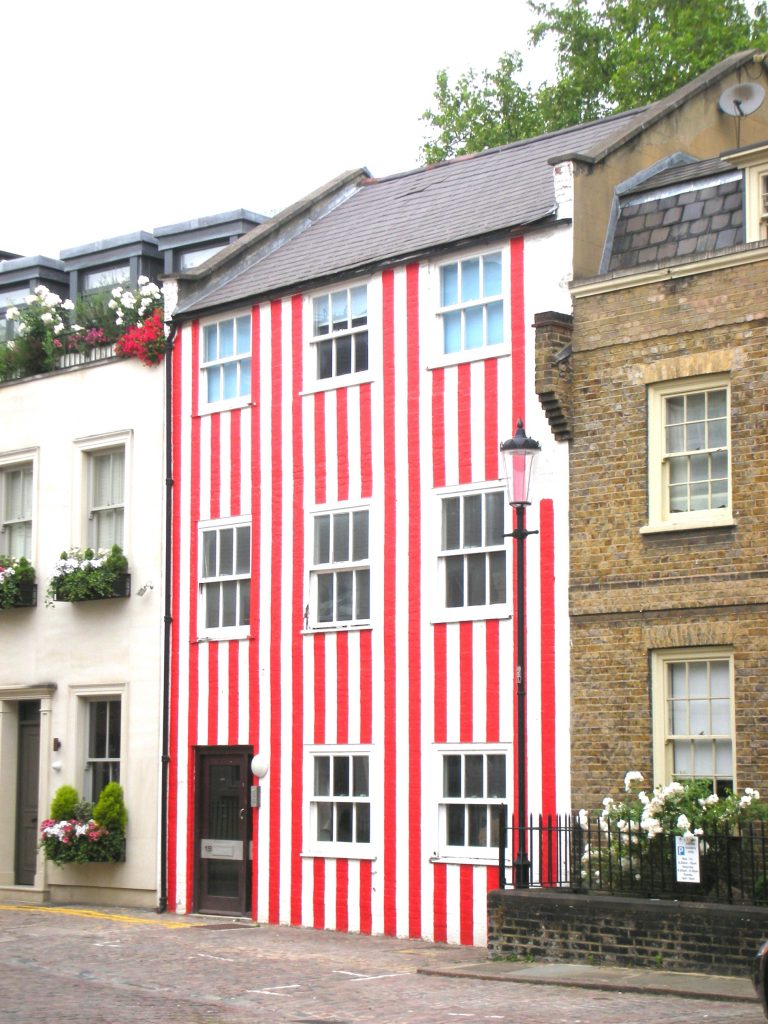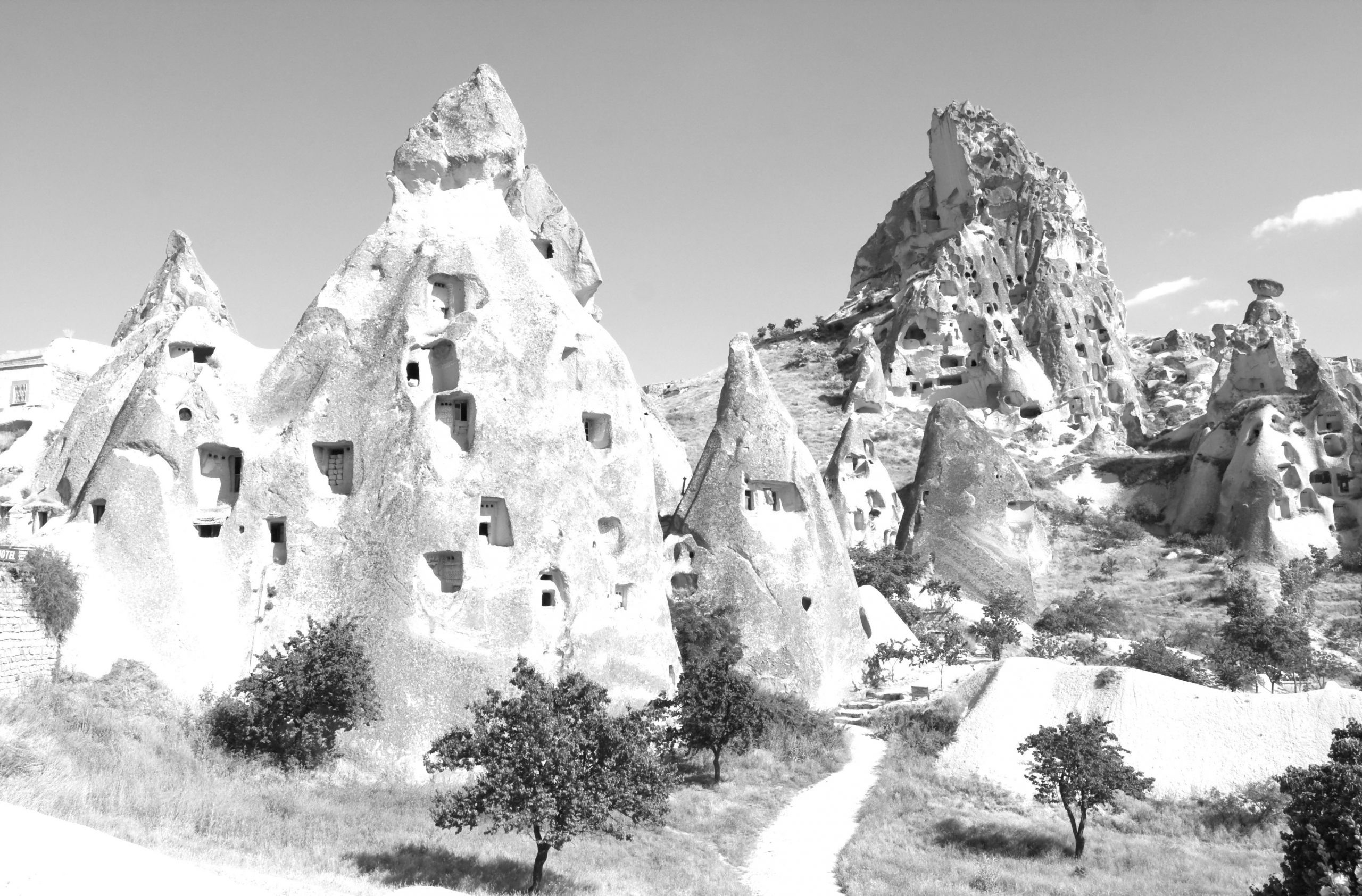Anyone who has visited the below ground troglodyte houses of Cappadocia, a region of central Turkey, knows that these ancient habitations are as impressive as they are unusual. They are mostly cut out of the rock face of a steep mountain. They offer very good thermal properties being naturally cool in the hot summers and warm in the cold winters. The prospect from them can be as breathtaking as the aspect because they are inserted into the sides of curiously shaped conical stone hills and afford the inhabitant super views of the strange surrounding landscape.
Generally, however, it is difficult to create comfortable underground rooms for living. This is why, in many parts of the world, for example hotels in the Middle East, the top half of a building above ground is serviced by a bottom half which is submerged below ground. The two worlds, although part of the same building, can exist without the top half knowing about the existence of the bottom half except when an air conditioner needs repair or when room service miraculously appears at the touch of a button. In London, on the other hand, we seem to have reached a point where houses in the most expensive areas, rather than housing the service and staff below ground, create subterranean luxury additions which are so popular they are deemed a necessity for modern life for those who can afford them.
So why are we obsessed with excavating below ground? In London the pressure and demands on space are substantial, but severe restrictions on development are in place. It is not possible to go up. It is not permissible to enlarge plot sizes as it is not possible to buy a few plots and to replace the buildings with new. It is not feasible to extend to the rear. The old bomb sites from World War II have all been built over now. Only small infill developments can be built here or there. In addition the Green Belt restricts outward development of the city. Apart from a rather measly conservatory extension or maybe a roof conversion, the only way to expand is downwards, into the London clay.
The numbers seem to add up. Depending on finishes it might cost £500 to £700 per square foot to construct a new basement, but what would its value be when complete? In central London, prices can range from £2000 to £8000 per square foot. Even in an area where prices are £1200 per square foot (and that includes large parts of Zone 2), and if one applies a discount of 20% because the space may not be served by natural daylight, then one would double one’s investment. In many cases it is possible to add on half the size of the existing house and in some cases even to double the square footage. So the commercial incentive is definitely there. This is presumably why there have been over 1500 basement extension applications in the last five years in Kensington and Chelsea alone.
However, excavation, underpinning and piling is a slow laborious process often carried out by single labourers working by hand in tight cramped environments. The nature of the build is such that any project can last from one and half to up to three or four years. Understandably, neighbours can get very exercised by the potential for disturbance through noise, dust, vibration and congestion in their street, and resistance to these applications can be very robust as the Duke and Duchess of Cambridge know only too well – the Duke’s application to house his personal offices under the Orangery of Kensington Palace was refused recently. In fact, objections have been so strong that the council of Kensington and Chelsea changed their policy last year, allowing only single story subterranean developments and only allowing 50% of the footprint of the garden to be developed.
Many of the historical objections from neighbours are now dealt with in the new planning submission guidelines which are much more rigorous than before. Traffic management plans are imperative, as are noise and dust mitigation strategies. Movement monitoring of neighbouring buildings are a necessity also, as are flood risk assessments. However, it can still cause much upset and disturbance especially if there are more than one development in a street. One London street that I know of has a total of twelve basement digs going on concurrently at present.
One extreme case in Knightsbridge involved the owner of an already large property (with an enormous back garden) digging a 10,000 square foot, three storey hole. The owner was imprisoned for fraud halfway through the project and the hole has remained an eyesore for over seven years much to the consternation of neighbours. Another owner in Kensington was so incensed that she was refused permission for her basement extension that she decided to paint the front of her house with vertical red and white stripes, akin to a giant Bridget Riley street painting. Some seemed to think it improved the neighbourhood but the local council have not agreed with them and rumour has it that the case by the council to return the façade to its original paint colour is going to the Supreme Court.

So what can be found in these basements? As there is little natural daylight, swimming pools, cinemas, nightclubs, gyms, spas, wine cellars, saunas, hamams and car stackers are typical programmes for subterranean rooms. With health now high on people’s agenda and a priority for the privileged who can afford to pay for exclusive facilities, a typical Georgian or Victorian building does offer good proportions and elegant cornicing but just doesn’t quite offer these new essentials. One basement extension for a steel magnate and his extended family was reputed to have a full time receptionist just to deal with bookings for the sauna, gym and swimming pool in the house spa. Maybe you would have thought they could have just talked to each other and worked it out, but no, a receptionist was deemed both necessary and presumably also chic and desirable. Another shipping billionaire was reputed to be putting a saltwater shark tank in his basement. This man, who obviously had delusions of life as a Bond villain, did this, I hope, to impress neighbours rather than to deal with them.
So unless something is done so that the supply of living space is not restricted, which it is at present, basements will inevitably continue to be dug. Fewer basements would be constructed if London became a less attractive city for the international rich. Certainly the last Conservative government did their very best to discourage the growth of London prime and super prime property prices by amendments to stamp duty, the removal of lower rates of VAT on approved alterations to listed buildings and amendments to laws surrounding properties bought through offshore companies. Now many people who live in large parts of central London cannot afford to upsize or downsize because of the punitive costs associated with moving; further restricting supply and actually encouraging extensions to existing dwellings. If these new taxes do not curtail the market completely (and rumour has it that the Chinese may soon be starting to buy big into the London residential property market) then this will just be another twist in the incredible, continuing and over three hundred year old tale of the great adaptability of the Georgian home – now with ever increasing basement space.
Main image (c) Adobe Stock







